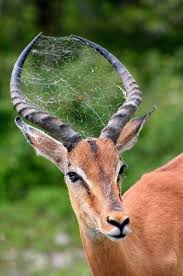Symbiosis
Symbiosis:
It is a relationship between members of different species, in which they live together for longer or
shorter periods of time. Symbiosis is of three types.
a. Parasitism
It is a type of symbiosis (between members of different species), in which smaller partner (parasite)
derives food and shelter from the body of larger partner (host) and, in turn, harms it.
In temporary parasitism, the parasite spends most of its life cycle as independent free-living
organisms. Only a part of its life cycle is spent as a parasite. Predator Plants
Leech, bed bug, mosquito are common temporary parasites of humans. In permanent parasitism,
the parasites spend their whole life cycle as parasites. Many disease causing bacteria and all viruses
are permanent parasites. Parasites may also be classified as ectoparasites and endoparasites.
Ectoparasites live outside i.e. on the surface of host’s body and get food from there. Mosquitoes,
leeches, lice etc. are the examples of ectoparasites
Endoparasites live inside the body of host and get food and shelter. Bacteria, viruses, tapeworm,
Ascaris, Entamoeba, Plasmodium etc. are the examples of endoparasites.
Some plants (e.g. Cuscuta, also called dodder) are parasites on other plants.
Parasitic plants grow special types of roots (haustoria) into host body and suck the required nutrients
from the vascular tissues of host.
b. Mutualism:
In this type of symbiotic interaction, both partners (of
different species) get benefit and neither is harmed. For
example, Termites eat wood but are not able to digest
it. A protozoan lives in its intestine. It secretes ‘cellulase’
enzyme to digest the cellulose of wood. In return, the
termite provides food and shelter to the protozoan (Fig.
16.14). The nitrogen fixer bacteria Rhizobium live in the
root nodules of leguminous plants like pea, gram etc.
The bacteria obtain food and shelter from plants while
in return they fix gaseous nitrogen into nitrates for the
plant which is required for their growth.
c. Commensalism:
It is a type of symbiosis in which one partner is benefited while the other is neither benefited nor
harmed. For example:
• Epiphytes are small plants found growing on other larger plants for space only . They
absorb water and minerals from atmosphere and prepare their own food. The larger plants are
neither benefited nor harmed in any way.
• Sucker fish attaches to the surface of sharks by its sucker. In this way, the shark
provides easy transport to the sucker fish to new feeding grounds.



Supper post.
ReplyDeleteSaleem
Good post
ReplyDeleteToo good
ReplyDeleteits impressive well done
ReplyDelete